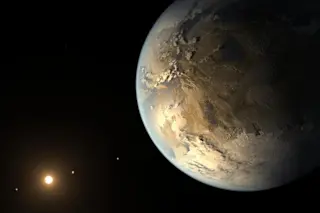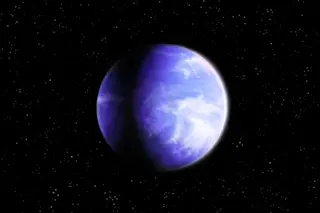For the first 15 years of DISCOVER’s existence, if you wanted to hear about planets orbiting other stars, you had your choice of sources: Star Wars and Star Trek. That all changed in 1995 with the discovery of a planet orbiting 51 Pegasi, a near-twin of the sun located about 50 light-years away. Swiss astronomers Michel Mayor and Didier Queloz found the distant world by watching its gravity tug its parent star. Over the following year, American scientists Geoffrey Marcy and Paul Butler confirmed the observation and soon found several more planets on their own.
The first exoplanet discoveries upended the world of astronomy. Scientists had always assumed that other solar systems (if they existed) would look pretty much like ours. Not these: The new planets were giants, like Jupiter, but more than half lay closer to their stars than Mercury does to our sun, whipping around in just a ...














